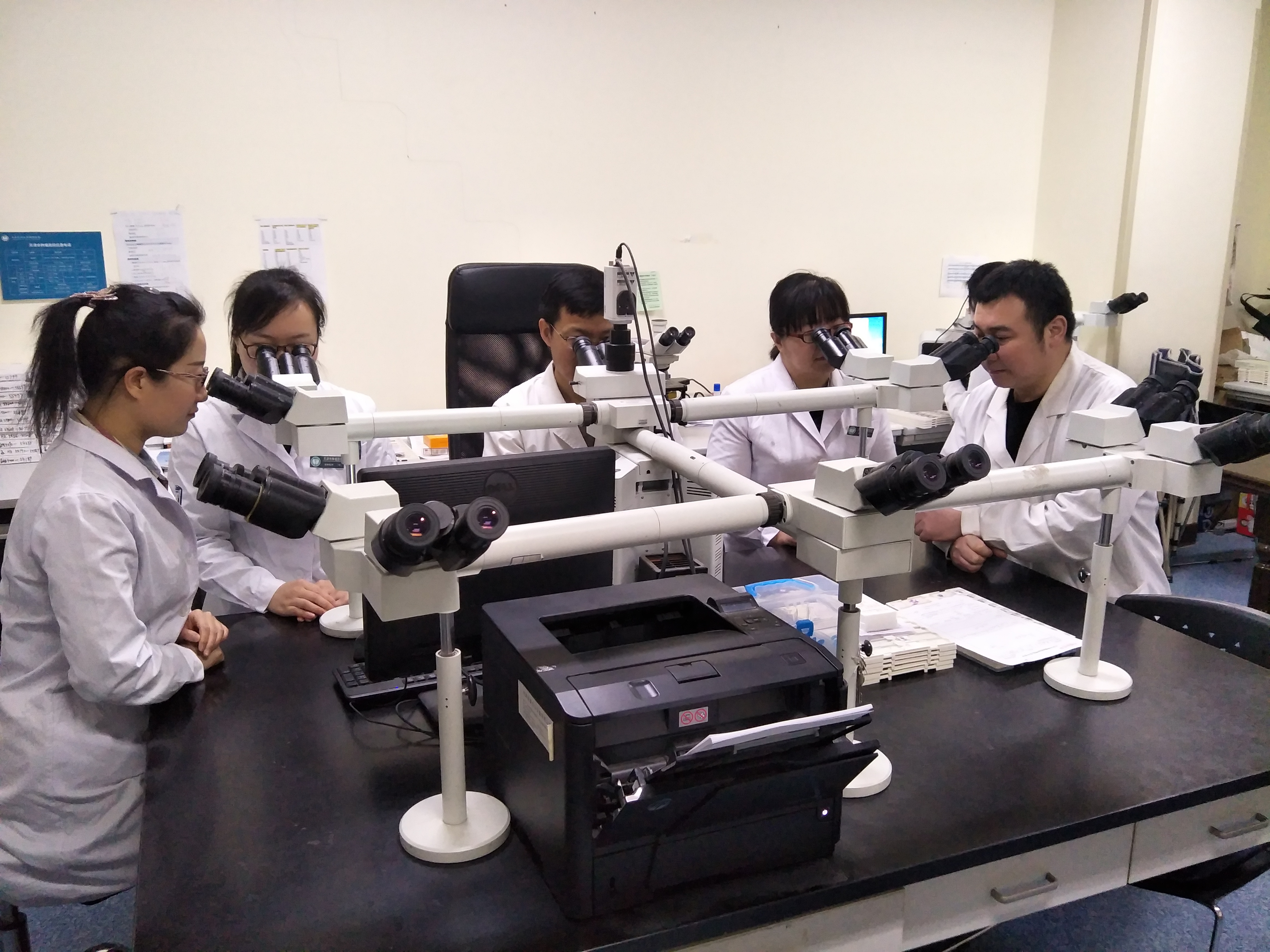Introduciton
The Department of Pathology, Tianjin Medical University Cancer Institute & Hospital , established in the 1950s by Prof. Wang Deyan, one of the most famous pathologists in China. The department has been progressing under the leadership of Prof. Wang Deyan, Prof. Zhang baolin, Prof. Zhang lianyu, Prof. Sun baocun and the current director Prof. Meng bin. Totally, there are 55 staffs in the department, including 25 pathologists, 3 researchers and 27 technicians. Among them, four pathologists have senior professional titles, seven have deputy senior professional titles, and 20 (71.4%) have doctoral degree. Nine staffs have an experience of studying abroad, and three gained the title of provincial and ministerial talents.
As a postdoctoral research station, there are 2 doctoral supervisors and 4 master supervisors in the department. Both Tianjin Pathological Quality Control Center and Tianjin Pathological Consultation Center were organized in the department of Pathology. In addition, the National Advanced Training Class of Oncopathology has been held in the department every year since the 1980s.
After more than 60 years of development, the pathology department has become one of the leading pathology departments in China, with the progression in clinical diagnosis, teaching and scientific research. The department was selected into the program of National Key Clinical Specialty of Pathology in 2013, and was approved in 2017.
As one of the pathology departments establishing subspecialties earliest in China, the pathology department has six subspecialty groups and more than a dozen professional directions (Breast pathology is established independently). Based on the development of subspecialty groups, China-USA Lymphoma Pathological Diagnosis Center and Lung Cancer Center have been established. The pathological techniques have been applied, including routine histological paraffin embedding-HE staining, freezing tissue slices, cytopathological examination, special staining, automatic immunohistochemical (IHC) staining, and some molecular biological techniques such as in situ hybridization (ISH), fluorescence in situ hybridization (FISH), fluorescence quantitative PCR, gene sequencing and DNA fragment analysis.
The annual workload (excluding breast pathology) includes more than 370,000 H&E-stained slides, more than 160,000 IHC slides, more than 10,000 cases of frozen diagnosis during operations, about 5,000 cases of molecular detection and 15,000 cases of out-of-hospital consultations which mainly from North, Northeast and Northwest of China. The workload has been taking the first place among all of the hospitals in Tianjin over the years.
The staffs in the department have undertaken some national and provincial research projects, including one 863 project, one 973 sub-project. In the past five years, we obtained 21 research projects at various levels, including 8 National Projects. Fifty-four SCI papers were published, including 10 articles with the impact factor > 5, and the highest impact factor is 23.893 (Cancer Cell).
The department also won a number of national and provincial research awards. The National Advanced Training Class of Oncopathology has been held for 38 consecutive sessions in the department since the 1980s, which has trained hundreds of pathologists from all over the country. In recent years, as the Standardized Training Base for Pathologists in Tianjin, the department has trained more than 30 pathologists. In addition, 40 postgraduates and 2 postdoctoral students have been trained in the department.
